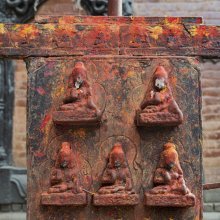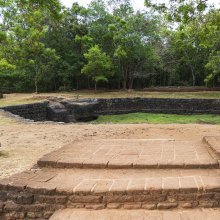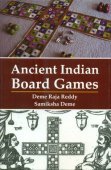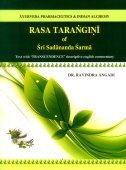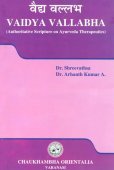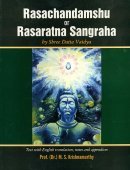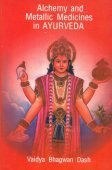Ashta, Asta, Astā, Aṣṭa, Aṣṭan, Ashtan: 37 definitions
Introduction:
Ashta means something in Buddhism, Pali, Hinduism, Sanskrit, Jainism, Prakrit, the history of ancient India, Marathi, Hindi, biology. If you want to know the exact meaning, history, etymology or English translation of this term then check out the descriptions on this page. Add your comment or reference to a book if you want to contribute to this summary article.
The Sanskrit terms Aṣṭa and Aṣṭan can be transliterated into English as Asta or Ashta or Astan or Ashtan, using the IAST transliteration scheme (?).
Alternative spellings of this word include Asht.
Images (photo gallery)
In Hinduism
Jyotisha (astronomy and astrology)
Source: Wisdom Library: Brihat Samhita by Varahamihira1) Asta (अस्त) refers to “sunset”, according to the Bṛhatsaṃhitā (chapter 3), an encyclopedic Sanskrit work written by Varāhamihira mainly focusing on the science of ancient Indian astronomy astronomy (Jyotiṣa).—Accordingly, “If, at rising, the sun should be crossed by the fall of an aerolite, or thunderbolt, or by lightning, the reigning prince will die and a foreign prince will succeed. If, for several days, there should appear a halo [i.e., pariveṣin] round the sun both at rising and setting or if the sun should, at such periods, be of blood color [i.e., raktosta], the reigning sovereign will be dethroned and a foreign prince will succeed.
2) Aṣṭa (अष्ट) refers to “eight” types of Ketus (i.e., luminous bodies such as comets and meteors), according to the Bṛhatsaṃhitā (chapter 11).—Accordingly, “The comets that resemble clusters of stars are named Gaṇakā Ketus; they are 8 [i.e., aṣṭa] in number and are the sons of Prajāpati. Those that are oblongular in shape, are 204 in number and are the sons of Brahmā. The comets that resemble clusters of bamboo canes and that are as bright as the moon are named Kaṅkā Ketus; they are the sons of Varuṇa and are 32 in number. When they appear mankind will suffer miseries”.
3) Asta (अस्त) or Astagiri refers to a mountain belonging to “Apara or Aparadeśa (western divisions)” classified under the constellations of Jyeṣṭhā, Mūla and Pūrvāṣāḍha, according to the system of Kūrmavibhāga, according to the Bṛhatsaṃhitā (chapter 14).—Accordingly, “The countries of the Earth beginning from the centre of Bhāratavarṣa and going round the east, south-east, south, etc., are divided into 9 divisions corresponding to the 27 lunar asterisms at the rate of 3 for each division and beginning from Kṛttikā. The constellations of Jyeṣṭhā, Mūla and Pūrvāṣāḍha represent the western divisions consisting of [i.e., Asta] [...]”.
Source: Wikibooks (hi): Sanskrit Technical TermsAsta (अस्त).—The setting of a heavenly body. Note: Asta is a Sanskrit technical term used in ancient Indian sciences such as Astronomy, Mathematics and Geometry.

Jyotisha (ज्योतिष, jyotiṣa or jyotish) refers to ‘astronomy’ or “Vedic astrology” and represents the fifth of the six Vedangas (additional sciences to be studied along with the Vedas). Jyotisha concerns itself with the study and prediction of the movements of celestial bodies, in order to calculate the auspicious time for rituals and ceremonies.
Purana and Itihasa (epic history)
Source: archive.org: Shiva Purana - English Translation1) Aṣṭa (अष्ट) or Aṣṭavarṣā refers to a “maiden of eight years old”, according to the Śivapurāṇa 2.3.11.—Accordingly, as Brahmā narrated: “O Nārada, the daughter of the mountain, honoured in the three worlds, was brought up in the palace of Himācala. When she was eight years old [i.e., aṣṭa-varṣā], Śiva distressed by Śatī’s separation came to know of her birth. Keeping her wonderful memory within his heart He rejoiced much. In the meantime, following the conventions of the world, Śiva wished to perform penance in order to concentrate his mind properly. [...]”.
2) Asta (अस्त) or Astācala refers to the “(liberal) western mountain”, according to the Śivapurāṇa 2.3.37 (“The letter of betrothal is dispatched”).—Accordingly, as Himavat prepared the wedding of Menā and Śiva: “[...] O celestial sage, listen to a detailed narration of the arrival of those mountains. [...] Bringing with him many articles of presentation, the liberal Western mountain (asta-acala) reached there in a divine form. The Eastern mountain came there with brilliant gems and jewels. He looked delighted and extremely brilliant. The highly venerable lord of mountains, Malaya, came there with his followers. He was happy with his excellent followers. The mountain Dardura came along with his wife. He was exquisitely dressed. He was delighted. He had many attendants with him. [...]”.
Note: ‘Asta’ is a mythical sunset mountain in the West while ‘Udaya’ is a mythical sunrise mountain in the East.

The Purana (पुराण, purāṇas) refers to Sanskrit literature preserving ancient India’s vast cultural history, including historical legends, religious ceremonies, various arts and sciences. The eighteen mahapuranas total over 400,000 shlokas (metrical couplets) and date to at least several centuries BCE.
Shaktism (Shakta philosophy)
Source: Google Books: ManthanabhairavatantramAṣṭan (अष्टन्) or Aṣṭakula refers to the “eight (kinds of Kula)”, according to the Manthānabhairavatantra, a vast sprawling work that belongs to a corpus of Tantric texts concerned with the worship of the goddess Kubjikā.—Accordingly, “[...] Kula is of eight kinds (aṣṭan—kulam aṣṭavidhaṃ kule) in the Kula (teaching). He who knows the omnipresent Kula is a teacher in the Kula. He who says that Kulakaula is devoid of the knowledge of the planes (of existence) does not have liberation and he wanders in the world of transmigration full of the wombs (within which he is reborn)”.
Source: Brill: Śaivism and the Tantric Traditions (shaktism)Aṣṭa (अष्ट) or Aṣṭaśakti refers to the “eight (powers) (of the love-god Kāmadeva)” and is used to describe the Goddesses of the eight powers of Kāmadeva, according to the King Vatsarāja’s Pūjāstuti called the Kāmasiddhistuti (also Vāmakeśvarīstuti), guiding one through the worship of the Goddess Nityā.—Accordingly, “[...] I worship those compassionately-disposed goddesses of red-complexion, the eight powers of the bodiless [love-god Kāmadeva] (aṣṭa—anaṅgaśaktīr aṣṭau tāḥ), who have arisen like shadows of the goddess [Nityā Sundarī] and are very difficult to conquer. I venerate those fourteen goddesses, with Sarvasaṃkṣobhaṇī at the fore, to whom [all] fourteen worlds bow. They carry a bow and arrows made of sugarcane. [...]”.

Shakta (शाक्त, śākta) or Shaktism (śāktism) represents a tradition of Hinduism where the Goddess (Devi) is revered and worshipped. Shakta literature includes a range of scriptures, including various Agamas and Tantras, although its roots may be traced back to the Vedas.
Shaivism (Shaiva philosophy)
Source: Brill: Śaivism and the Tantric TraditionsAṣṭan (अष्टन्) refers to the “eight (petals of a lotus)”, according to verse 4.497ff of the Brahmayāmala-tantra (or Picumata), an early 7th century Śaiva text consisting of twelve-thousand verses.—Accordingly, “[...] A series of nine lotuses is visualized situated at points in the body called granthis (knots or joints). These are located at the crown of the head, the forehead, throat, navel, knees, mouth, heart, genitals, and feet, following the order of their sequence in nyāsa. he eight-petalled lotuses (aṣṭan-patra) situated therein are loci for installation of the principal nine deities: Kapālīśabhairava, who is installed in the crown lotus, and two sets of four goddesses, the Devīs and the Dūtīs. [...]”.
Source: SOAS University of London: Protective Rites in the Netra TantraAṣṭan (अष्टन्) refers to the “eight (petals)” (of a lotus), according to the Netratantra of Kṣemarāja: a Śaiva text from the 9th century in which Śiva (Bhairava) teaches Pārvatī topics such as metaphysics, cosmology, and soteriology.—Accordingly, [verse 2.17-19]—“The pure-souled Ācārya should draw an eight petaled lotus (aṣṭan-dala—padmam aṣṭadalaṃ kṛtvā), in smooth, pure earth [that is] smeared with sandal and aloe wood [and] scented [with] fragrant camphor and strong saffron. After he has drawn [the lotus] with a great undertaking, [the Ācarya,] decorated and adorned with a crown, smeared with sandalwood, [writes] the mātṛkā. Having placed oṃ in the middle [on the pericarp of the lotus], he should draw [the phonemes of the mātṛkā on the petals] starting in the East”.

Shaiva (शैव, śaiva) or Shaivism (śaivism) represents a tradition of Hinduism worshiping Shiva as the supreme being. Closely related to Shaktism, Shaiva literature includes a range of scriptures, including Tantras, while the root of this tradition may be traced back to the ancient Vedas.
Ganitashastra (Mathematics and Algebra)
Source: archive.org: Hindu MathematicsAṣṭa (अष्ट) represents the number 8 (eight) in the “word-numeral system” (bhūtasaṃkhyā), which was used in Sanskrit texts dealing with astronomy, mathematics, metrics, as well as in the dates of inscriptions and manuscripts in ancient Indian literature.—Bhaṭṭotpala in his commentary on the Bṛhatsaṃhitā has given a quotation from the original Puliśa-siddhānta (c. 400) in which the word system is used. The number expressed in this quotation is kha (0) kha (0) aṣṭa (8) muni (7) rāma (3) aśvi (2) netra (2) aṣṭa (8) śara (5) rātripāḥ (i) = 1,582,237,800. There are in this work several other quotations from the Puliśasiddhānta, which contain word numerals.
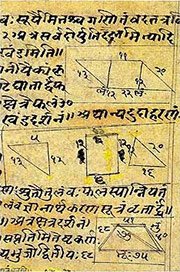
Ganitashastra (शिल्पशास्त्र, gaṇitaśāstra) refers to the ancient Indian science of mathematics, algebra, number theory, arithmetic, etc. Closely allied with astronomy, both were commonly taught and studied in universities, even since the 1st millennium BCE. Ganita-shastra also includes ritualistic math-books such as the Shulba-sutras.
Yoga (school of philosophy)
Source: ORA: Amanaska (king of all yogas): A Critical Edition and Annotated Translation by Jason BirchAsta (अस्त) refers to the “sunset”, according to the Amanaska Yoga treatise dealing with meditation, absorption, yogic powers and liberation.—Accordingly, as Īśvara says to Vāmadeva: “[...] [The Yogin] will obtain liberation by cutting with the razor of the no-mind [state] the tough cord of the three Guṇas that binds the self. Just as everything disappears [from view] as the sun sets, so (asta), the whole network of [past] actions (karma) dissolves into the no-mind [state]. [...]”.

Yoga is originally considered a branch of Hindu philosophy (astika), but both ancient and modern Yoga combine the physical, mental and spiritual. Yoga teaches various physical techniques also known as āsanas (postures), used for various purposes (eg., meditation, contemplation, relaxation).
In Buddhism
Tibetan Buddhism (Vajrayana or tantric Buddhism)
Source: OSU Press: Cakrasamvara SamadhiAṣṭan (अष्टन्) or Aṣṭalāsyā refers to the “eight dances” and represents a shorter version of the ṣoḍaśalāśyā (eighteen dances) (Cf. Svabhāvapūjā) which (as a subsection of the Gurumaṇḍala) refers to one of the various rituals typically performed as a part of the larger rites, according to Buddhist teachings followed by the Newah in Nepal, Kathmandu Valley (whose roots can be traced to the Licchavi period, 300-879 CE).

Tibetan Buddhism includes schools such as Nyingma, Kadampa, Kagyu and Gelug. Their primary canon of literature is divided in two broad categories: The Kangyur, which consists of Buddha’s words, and the Tengyur, which includes commentaries from various sources. Esotericism and tantra techniques (vajrayāna) are collected indepently.
In Jainism
General definition (in Jainism)
Source: The University of Sydney: A study of the Twelve ReflectionsAsta (अस्त) refers to “coming to an end”, according to the 11th century Jñānārṇava, a treatise on Jain Yoga in roughly 2200 Sanskrit verses composed by Śubhacandra.—Accordingly, “Also, consider that the state of being a mighty lord over gods, snakes and men, which is like a rainbow, immediately becomes annihilated [com.—comes to (samāyāti) an end (astam)] by itself”.

Jainism is an Indian religion of Dharma whose doctrine revolves around harmlessness (ahimsa) towards every living being. The two major branches (Digambara and Svetambara) of Jainism stimulate self-control (or, shramana, ‘self-reliance’) and spiritual development through a path of peace for the soul to progess to the ultimate goal.
India history and geography
Source: Cologne Digital Sanskrit Dictionaries: Indian Epigraphical GlossaryAṣṭa.—cf. aṣṭa-bhoga, probably ‘all kinds of enjoyment’ (and not merely ‘eight’ kinds) ensuring tejaḥ-svāmya or owner- ship endowed with complete authority. Cf. aṣṭādaśa, etc. Note: aṣṭa is defined in the “Indian epigraphical glossary” as it can be found on ancient inscriptions commonly written in Sanskrit, Prakrit or Dravidian languages.

The history of India traces the identification of countries, villages, towns and other regions of India, as well as mythology, zoology, royal dynasties, rulers, tribes, local festivities and traditions and regional languages. Ancient India enjoyed religious freedom and encourages the path of Dharma, a concept common to Buddhism, Hinduism, and Jainism.
Biology (plants and animals)
Source: Wisdom Library: Local Names of Plants and DrugsAshta in the Marathi language is the name of a plant identified with Ficus rumphii Bl. from the Moraceae (Mulberry) family having the following synonyms: Ficus cordifolia, Ficus populnea. For the possible medicinal usage of ashta, you can check this page for potential sources and references, although be aware that any some or none of the side-effects may not be mentioned here, wether they be harmful or beneficial to health.
Ashta [आष्ट] in the Marathi language is the name of a plant identified with Thespesia populnea Thespesia populnea (L.) Sol. ex Corrêa from the Malvaceae (Mallow) family having the following synonyms: Hibiscus populneus, Abelmoschus acuminatus, Hibiscus blumei.
Source: Google Books: CRC World Dictionary (Regional names)1) Ashta in India is the name of a plant defined with Bauhinia purpurea in various botanical sources. This page contains potential references in Ayurveda, modern medicine, and other folk traditions or local practices It has the synonym Bauhinia castrata Blanco (among others).
2) Ashta is also identified with Bauhinia racemosa It has the synonym Piliostigma racemosum (Lam.) Benth. (etc.).
3) Ashta is also identified with Ficus rumphii It has the synonym Urostigma cordifolium Gasp. (etc.).
Example references for further research on medicinal uses or toxicity (see latin names for full list):
· Hortus Bengalensis, or ‘a Catalogue of the Plants Growing in the Hounourable East India Company's Botanical Garden at Calcutta’ (1814)
· Journ. Arn. Arb. (1950)
· Bijdragen tot de flora van Nederlandsch Indië (1825)
· Linnaea (1841)
· Encyclopédie Méthodique. Botanique (1811)
· Bombay Fl. (1861)
If you are looking for specific details regarding Ashta, for example extract dosage, diet and recipes, chemical composition, side effects, pregnancy safety, health benefits, have a look at these references.

This sections includes definitions from the five kingdoms of living things: Animals, Plants, Fungi, Protists and Monera. It will include both the official binomial nomenclature (scientific names usually in Latin) as well as regional spellings and variants.
Languages of India and abroad
Marathi-English dictionary
Source: DDSA: The Molesworth Marathi and English Dictionaryaṣṭa (अष्ट).—a (S) Eight.
--- OR ---
asta (अस्त).—m n (S) Setting (of a heavenly body). 2 Immersion or obscuration of a planet (as of Venus or Mercury, or of a comet). 3 fig. Ruin; fall into infamy or obscurity. 4 fig. Consumption or exhaustion: also emptiness, absence, lack.
--- OR ---
āṣṭa (आष्ट) [or आस, āsa].—m A tree, Hibiscus populneoides. 2 f The name of another tree.
Source: DDSA: The Aryabhusan school dictionary, Marathi-Englishaṣṭa (अष्ट).—a Eight.
--- OR ---
asta (अस्त).—m n Setting (of a heavenly body) Fig. Ruin. Consumption, lack.
Marathi is an Indo-European language having over 70 million native speakers people in (predominantly) Maharashtra India. Marathi, like many other Indo-Aryan languages, evolved from early forms of Prakrit, which itself is a subset of Sanskrit, one of the most ancient languages of the world.
Sanskrit dictionary
Source: DDSA: The practical Sanskrit-English dictionaryAṣṭan (अष्टन्).—num. a. [aśa-vyāptau kanin tuṭ ca Uṇādi-sūtra 1.154.] (nom., acc. aṣṭa-ṣṭau) Eight. It often occurs in comp. as अष्टा (aṣṭā) with numerals and some other nouns; as अष्टादशन्, अष्टाविंशतिः, अष्टापद (aṣṭādaśan, aṣṭāviṃśatiḥ, aṣṭāpada) &c. [cf. L. octo; Gr. okto; Zend astani Pers. hasht.].
Source: DDSA: The practical Sanskrit-English dictionary
Asta (अस्त).—[asyante sūryakiraṇā yatra as-ādhāre kta]
1) Setting, western mountain (behind which the Sun is supposed to set); यश्चैष विन्ध्यास्तमहेन्द्रकल्पो (yaścaiṣa vindhyāstamahendrakalpo)... अधिरोढुमस्तगि- रिमभ्यपतत् (adhiroḍhumastagi- rimabhyapatat) Śiśupālavadha 9.1; विडम्बयत्यस्तनिमग्नसूर्यम् (viḍambayatyastanimagnasūryam) R.16.11; यात्येक्रतोऽस्तशिखरं पतिरोषधीनाम् (yātyekrato'staśikharaṃ patiroṣadhīnām) Ś.4.2.
2) Sunset.
3) Setting in general; (fig.) fall, decline; see below.
4) Conjunction of a planet with the Sun; शुक्रास्त, बुधास्त (śukrāsta, budhāsta) &c.
-stam 1 Home, abode, residence (Ved.); तमग्निमस्ते वसवो न्यृण्वन् (tamagnimaste vasavo nyṛṇvan) Ṛgveda 7.1.2,1.34.1.
2) Death, end. आकाशं प्रत्यस्तं यन्ति (ākāśaṃ pratyastaṃ yanti) Ch. Up.1.9.1.
3) The seventh house (in astr.; lagnātsaptamaṃ sthānam).
-stam ind. At home, home; अस्तं गम्, -या-इ-प्राप् (astaṃ gam, -yā-i-prāp) (a) To set, decline in the western horizon; गतोऽस्तमर्कः (gato'stamarkaḥ) the Sun has set; (fig.) it is time to do the duties to be performed at sunset; e. g. for a cowherd to drive home his cattle, for a religious person to begin his prayers, for a thief to begin his nightly work &c.; कथमिहैव युवयोरस्तमितः सूर्यः (kathamihaiva yuvayorastamitaḥ sūryaḥ) V.3. and Sar. S. 1. (b) To cease, vanish, be removed, disappear, be at an end; विषयिणः कस्यापदोऽ स्तं गताः (viṣayiṇaḥ kasyāpado' staṃ gatāḥ) Pañcatantra (Bombay) 1.146. धृतिरस्तमिता (dhṛtirastamitā) R.8.66; दण्डेनास्तमितत्विषा (daṇḍenāstamitatviṣā) Kumārasambhava 2.23; अस्तिमितैषा कथा (astimitaiṣā kathā) K.156 at an end, over; 198,24. (c) to die; अथ चास्तमिता त्वमात्मना (atha cāstamitā tvamātmanā) R.8.51,12.11.
Derivable forms: astaḥ (अस्तः).
--- OR ---
Asta (अस्त).—p. p.
1) Thrown, cast, given up, left; असमये यत्त्वयास्तोऽभिमानः (asamaye yattvayāsto'bhimānaḥ) Ve.6.
2) Finished.
3) Despatched.
-stā Ved. A missile, an arrow.
--- OR ---
Astā (अस्ता).—ind. Ved. at hand, near.
See also (synonyms): astanike.
--- OR ---
Asta (अस्त).—&c, see under अस् (as).
See also (synonyms): astu.
Source: Cologne Digital Sanskrit Dictionaries: Edgerton Buddhist Hybrid Sanskrit DictionaryAṣṭa (अष्ट).—ppp. of aśnoti (Vedic -aṣṭa in cpds.), obtained: Lalitavistara 390.9 (verse) aṣṭam arthaṃ. A word-play is clearly intended; see Aṣṭaṃga. (Calcutta (see LV.) reads iṣṭam, without support of any of Lefm.'s mss.)
Source: Cologne Digital Sanskrit Dictionaries: Shabda-Sagara Sanskrit-English DictionaryAṣṭan (अष्टन्).—mfn. plu. only (aṣṭa or aṣṭau) Eight. E. asū to pervade, kanin Unadi affix, and tud inserted.
Source: Cologne Digital Sanskrit Dictionaries: Shabda-Sagara Sanskrit-English DictionaryAsta (अस्त).—Sautra root. 10th cl. (astayati) To obscure or eclipse.
--- OR ---
Asta (अस्त).—mfn.
(-staḥ-stā-staṃ) 1. Thrown, cast. 2. Sent, dispatched. 3. Set, obscured. 4. Removed, set aside. m.
(-staḥ) 1. The western mountain, behind which the sun is supposed to set. 2. Sun-set. n.
(-staṃ) Death, end. E. asta to obscure or eclipse, ac affix, or asa to throw, &c. and kta aff.
Source: Cologne Digital Sanskrit Dictionaries: Benfey Sanskrit-English DictionaryAṣṭan (अष्टन्).—i. e. aś + tan (cf. aśīti; the vb. is doubtful), card. num., adj. Eight, [Hiḍimbavadha] 2, 9.
Source: Cologne Digital Sanskrit Dictionaries: Benfey Sanskrit-English DictionaryAṣṭā (अष्टा).—a substitute of aṣṭan in the former part of many comp. words, especially before numerals, e. g. aṣṭā -daśan, Eighteen.
--- OR ---
Asta (अस्त).—[as + ta] 1., I. n. Home. Ii. m. 1. Sun-set, [Pañcatantra] iii. [distich] 187; [Śiśupālavadha] 9, 5. The acc. sing. astam, combined like a prefix, with i, gam, yā, implies, To set, [Daśakumāracarita] 184, 1. 2. The western mountain, behind which the sun is supposed to set, [Rāmāyaṇa] 4, 37, 4. Iv. n. Death, [Kathāsaritsāgara, (ed. Brockhaus.)] 13, 74; [Rājataraṅgiṇī] 5, 126.
Source: Cologne Digital Sanskrit Dictionaries: Cappeller Sanskrit-English DictionaryAṣṭan (अष्टन्).—[adjective] eight.
Source: Cologne Digital Sanskrit Dictionaries: Cappeller Sanskrit-English DictionaryAsta (अस्त).—1. [neuter] home (also ka [neuter]); [accusative] [with] ī, gam, yā etc. go home, go down, set (of the sun); come to an end, die. As [masculine] the mountain behind which the sun and moon are supposed to set (cf. udaya), also = astamaya.
--- OR ---
Asta (अस्त).—2. [adjective] thrown, cast off (mostly °—).
--- OR ---
Astā (अस्ता).—[feminine] dart, bolt, arrow.
Source: Cologne Digital Sanskrit Dictionaries: Monier-Williams Sanskrit-English Dictionary1) Aṣṭa (अष्ट):—1. aṣṭa mfn. (√akṣ; cf. nir-√akṣ) ‘marked, branded’, only in [compound] with -karṇa
2) 2. aṣṭa [from] √1. aś. See a-samaṣṭa-k.
3) [from aṣṭan] 3 (in [compound] for aṣṭan).
4) Aṣṭā (अष्टा):—[from aṣṭan] (in [compound] for aṣṭan)
5) Aṣṭa (अष्ट):—[from aṣṭan] 4. aṣṭa aṣṭa or aṣṭā with the final a,ā blended in [compound]
6) Asta (अस्त):—1. asta mfn. (perf. [Passive voice] p. √2. as), thrown, cast, [Raghuvaṃśa xii, 91]
7) (an- [negative]), [Śatapatha-brāhmaṇa iii]
8) (only in [compound]) thrown off, left off, set aside, given up (as grief, anger, a vow, etc.), [Viṣṇu-purāṇa; Kathāsaritsāgara] etc.
9) Astā (अस्ता):—[from asta] a f. a missile, an arrow, [Atharva-veda]
10) Asta (अस्त):—2. asta n. home, [Ṛg-veda; Atharva-veda; Śatapatha-brāhmaṇa]
11) m. setting (as of the sun or of luminaries), [Varāha-mihira’s Bṛhat-saṃhitā; Sūryasiddhānta]
12) ‘end, death’ See asta-samaya below
13) the western mountain (behind which the sun is supposed to set), [Mahābhārata; Rāmāyaṇa] etc.
14) (in [astronomy]) the seventh lunar mansion, [Varāha-mihira’s Bṛhajjātaka]
15) m. astam-√i, astaṃ-√gam (also [Causal] See astaṃ-gamita below), or √prāp ([Kathāsaritsāgara]), to go to one’s eternal home, cease, vanish, perish, die, [Śatapatha-brāhmaṇa xiv; Mahābhārata] etc.
16) [astaṃ-√nī] ([-nayati]), to lead to setting, cause to set, [Mahābhārata iii, i 7330]
17) Astā (अस्ता):—[from asta] b ind. [varia lectio] for astam, [Sāma-veda]
Source: Cologne Digital Sanskrit Dictionaries: Monier-Williams Sanskrit-English Dictionary1) Aṣṭan (अष्टन्):—aṣṭau ([Ṛg-veda; Atharva-veda] etc.) or aṣṭā ([Ṛg-veda viii, 2, 41]) or aṣṭa ([Ṛg-veda x, 27, 15; Atharva-veda] etc.) [plural] eight (other forms are: [genitive case] aṣṭānām, [Manu-smṛti] etc.; [instrumental case] aṣṭabhis, [Ṛg-veda ii, 18, 4; Śatapatha-brāhmaṇa] etc.; [locative case] aṣṭāsu, [Śatapatha-brāhmaṇa etc.]);
2) [Latin] octo; [Greek] ὀκτώ. [Gothic] ahtau; [modern] [German] acht; [English] eight; [Lithuanian] asztůni; [Slavonic or Slavonian] osmj.
Source: Cologne Digital Sanskrit Dictionaries: Yates Sanskrit-English DictionaryAṣṭan (अष्टन्):—(ṣṭā) a. Eight.
Source: Cologne Digital Sanskrit Dictionaries: Yates Sanskrit-English Dictionary1) Asta (अस्त):—(ka) astayati 10. a. To set, to be obscured, to be eclipsed.
2) (staḥ) 1. m. The western mountain. n. Death. a. Thrown; set.
Source: DDSA: Paia-sadda-mahannavo; a comprehensive Prakrit Hindi dictionary (S)Aṣṭā (अष्टा) in the Sanskrit language is related to the Prakrit words: Aṭṭhā, Attha, Atthā, Atthāa.
[Sanskrit to German]
Sanskrit, also spelled संस्कृतम् (saṃskṛtam), is an ancient language of India commonly seen as the grandmother of the Indo-European language family (even English!). Closely allied with Prakrit and Pali, Sanskrit is more exhaustive in both grammar and terms and has the most extensive collection of literature in the world, greatly surpassing its sister-languages Greek and Latin.
Hindi dictionary
Source: DDSA: A practical Hindi-English dictionary1) Aṣṭa (अष्ट) [Also spelled asht]:—(a) eight; (nm) the number eight.
2) Asta (अस्त) [Also spelled ast]:—(a) set (as the sun); sunk; ~[prāya] almost set or sunk; dying; —[honā] to set or sink; to disappear or vanish.
...
Kannada-English dictionary
Source: Alar: Kannada-English corpusAṣṭa (ಅಷ್ಟ):—[adjective] totalling one more than seven; eight.
--- OR ---
Aṣṭa (ಅಷ್ಟ):—[noun] the cardinal number eight; 8.
--- OR ---
Asta (ಅಸ್ತ):—
1) [adjective] thrown (away, up); cast away.
2) [adjective] sent; despatched.
3) [adjective] prevented; warded off.
4) [adjective] gone; passed; past; set (as the sun, moon or a star in the west).
--- OR ---
Asta (ಅಸ್ತ):—
1) [noun] the western mountain behind which the sun is believed to set in the evening.
2) [noun] the conclusion; the end; death.
3) [noun] the instance of suṇs setting in the west.
4) [noun] (astrol.) the seventh house in the zodiac table.
--- OR ---
Āsta (ಆಸ್ತ):—[noun] = ಆಸ್ತೆ [aste]1.
Kannada is a Dravidian language (as opposed to the Indo-European language family) mainly spoken in the southwestern region of India.
Nepali dictionary
Source: unoes: Nepali-English Dictionary1) Aṣṭa (अष्ट):—adj. eight;
2) Asta (अस्त):—adj. 1. setting (heavenly body) 2. hidden; 3. invisible; unseen;
3) Asta (अस्त):—n. 1. setting; 2. death; demise;
Nepali is the primary language of the Nepalese people counting almost 20 million native speakers. The country of Nepal is situated in the Himalaya mountain range to the north of India.
See also (Relevant definitions)
Starts with (+588): Ashta Lakshmi, Ashta-ahika, Ashta-bhagika, Ashta-bhuti, Ashta-drishti, Ashta-macitti, Ashta-manakam, Ashta-paripalana, Ashta-pokasvamyam, Ashta-prahara, Ashta-pushpika, Ashta-tacamulam, Ashta-tacavattiyam, Ashta-tanaparitcai, Ashta-tantiravatam, Ashta-tikkupalakar, Ashta-vidha-arcana, Ashta-vidha-bhakti-kriya, Ashtabahu, Ashtabahudhara.
Ends with (+240): Aashta, Abhidashta, Abhisamdashta, Acarabhrashta, Acharabhrashta, Adakashta, Adasashta, Adashta, Adhikarabhrashta, Adhikashta, Adusashta, Agnikashtha, Agnipranashta, Ahidashta, Ahividashta, Ambashta, Anasta, Angakashta, Anuspashta, Anutrashta.
Full-text (+571): Ashtadasha, Astam, Astagiri, Ashtapadya, Ashtashata, Ashtakapala, Ashtanavati, Ashtapancashat, Ashtasaptati, Astamana, Ashtavakra, Ashtagava, Ashtastana, Ashtacatvarimshat, Ashtacakra, Ashtashashti, Ashtatrimshat, Ashtagrihita, Ashtataya, Ashtanavata.
Relevant text
Search found 82 books and stories containing Ashta, Ashtan, Asta, Āṣṭa, Astā, Aṣta, Āsta, Aṣṭa, Aṣṭā, Aṣṭan, Astan; (plurals include: Ashtas, Ashtans, Astas, Āṣṭas, Astās, Aṣtas, Āstas, Aṣṭas, Aṣṭās, Aṣṭans, Astans). You can also click to the full overview containing English textual excerpts. Below are direct links for the most relevant articles:
Rig Veda (translation and commentary) (by H. H. Wilson)
Sahitya-kaumudi by Baladeva Vidyabhushana (by Gaurapada Dāsa)
Text 2.33 < [Chapter 2 - The Natures of Words (śabda)]
Text 10.37 < [Chapter 10 - Ornaments of Meaning]
Text 7.75 < [Chapter 7 - Literary Faults]
Garga Samhita (English) (by Danavir Goswami)
Verse 2.8.5 < [Chapter 8 - Description of Seeing Lord Kṛṣṇa]
Verse 6.16.31 < [Chapter 16 - Seeing Śrī Rādhā’s Form]
Verse 1.3.2 < [Chapter 3 - Description of the Lord’s Appearance]
Bodhisattvacharyavatara (by Andreas Kretschmar)
Text Section 201 < [Khenpo Chöga’s Oral Explanations]
Text Section 138 < [Khenpo Chöga’s Oral Explanations]
Text Sections 177-178 < [Khenpo Chöga’s Oral Explanations]
Bhakti-rasamrta-sindhu (by Śrīla Rūpa Gosvāmī)
Verse 3.3.112 < [Part 3 - Fraternal Devotion (sakhya-rasa)]
Verse 4.2.7 < [Part 2 - Astonishment (adbhuta-rasa)]
Heimskringla (by Snorri Sturlson)
Part 67 - Olaf Haraldson Baptized < [Chapter VI - King Olaf Trygvason's Saga]
Part 49 - Birth Of Olaf, Son Of Harald Grenske < [Chapter VI - King Olaf Trygvason's Saga]
Part 31 - King Sigurd's Dress < [Chapter VII - Saga Of Olaf Haraldson]
Related products
